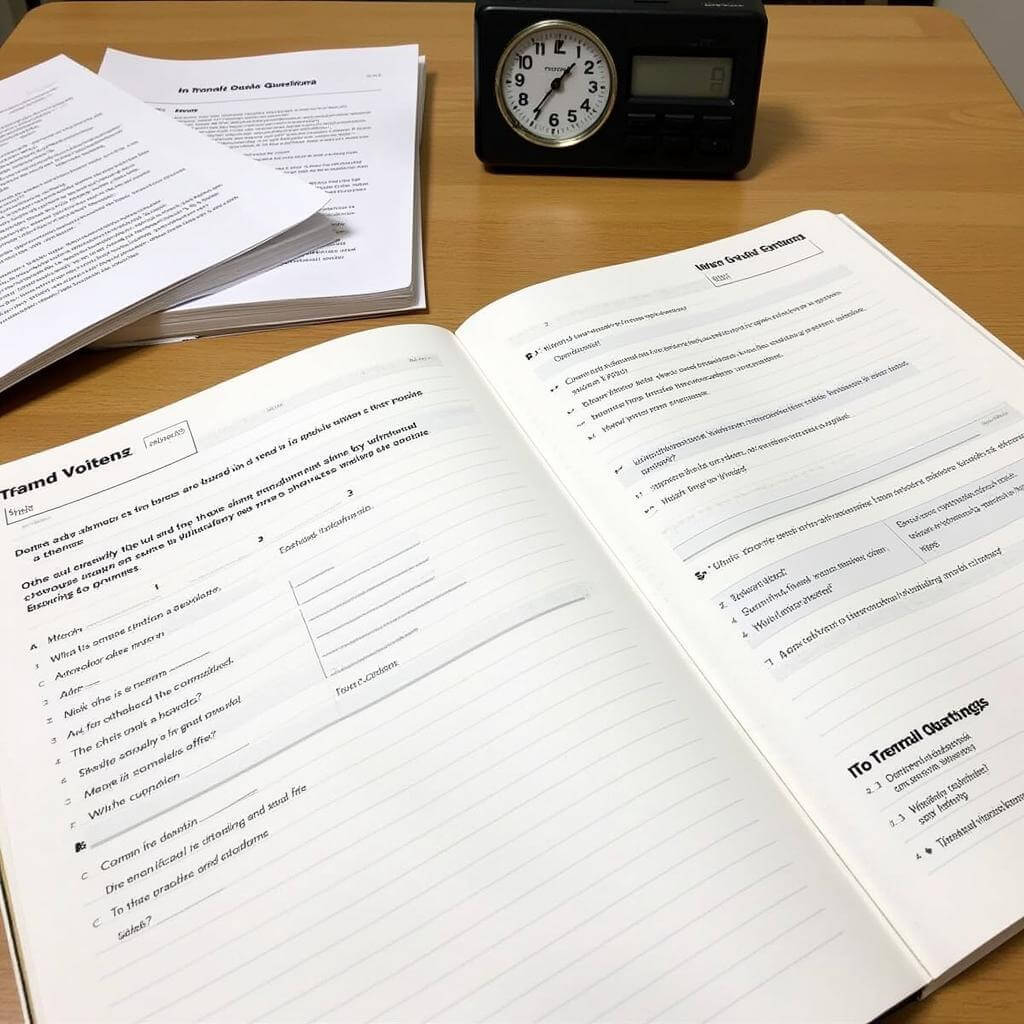Trend analysis is a crucial skill for success in IELTS Writing Task 1. This article will provide you with expert strategies to enhance your ability to analyze and describe trends effectively, helping you boost your score in this challenging section of the test.
Understanding the Importance of Trend Analysis
Trend analysis forms the core of many IELTS Writing Task 1 questions, particularly those involving graphs, charts, and diagrams. Examiners are looking for your ability to identify patterns, describe changes over time, and communicate data-driven insights clearly and accurately.
How to structure IELTS writing task 1 reports
Key Components of Effective Trend Analysis
To excel in trend analysis, focus on these essential elements:
- Identifying overall patterns
- Describing specific changes
- Using appropriate vocabulary
- Providing accurate comparisons
- Maintaining objectivity
Let’s delve deeper into each of these components and explore strategies to improve your performance.
1. Identifying Overall Patterns
Start by looking at the big picture. What’s the general trend? Is it increasing, decreasing, or fluctuating? This forms the basis of your overview paragraph.
“The first step in trend analysis is to step back and observe the overall direction of change. This bird’s-eye view sets the stage for your entire response,” advises Dr. Emma Thompson, IELTS examiner and language consultant.
Writing clear overviews in task 1
2. Describing Specific Changes
Once you’ve identified the overall pattern, zoom in on specific details. Look for:
- Significant increases or decreases
- Turning points or changes in direction
- Periods of stability
- Unusual spikes or dips
Use precise language to describe these changes, quantifying them where possible.
3. Using Appropriate Vocabulary
Employing a range of vocabulary is crucial for demonstrating your language proficiency. Here’s a list of useful terms for trend analysis:
- Verbs: increase, rise, grow, surge, decline, fall, plummet, fluctuate
- Adverbs: sharply, gradually, steadily, dramatically, slightly
- Nouns: upward trend, downward trend, fluctuation, peak, trough
How to practice grammar for task 1
4. Providing Accurate Comparisons
Comparisons are essential in trend analysis. They help highlight significant differences and similarities between data points. Use comparative and superlative forms to make these comparisons clear.
5. Maintaining Objectivity
Remember, your role is to describe the data objectively, not to give opinions or speculate on reasons for trends. Stick to the facts presented in the visual information.
Advanced Techniques for Trend Analysis
To take your trend analysis to the next level, consider these advanced strategies:
-
Grouping similar trends: If multiple data sets show similar patterns, group them together in your description.
-
Highlighting exceptions: While focusing on overall trends, don’t forget to mention significant outliers or exceptions.
-
Using precise time references: Instead of vague terms like “later” or “after some time,” use specific years or time periods from the data.
-
Balancing detail and brevity: Provide enough detail to accurately represent the data, but avoid describing every minor fluctuation.
-
Integrating numbers smoothly: Incorporate numerical data naturally into your sentences without overwhelming the reader.
Improving task 1 data analysis
Common Pitfalls to Avoid
Be aware of these common mistakes when analyzing trends:
- Over-generalizing or oversimplifying complex data
- Neglecting to mention important details or exceptions
- Using informal or imprecise language
- Making unsupported assumptions or predictions
- Failing to provide an overview
Practice Makes Perfect
Improving your trend analysis skills requires consistent practice. Here’s a step-by-step approach to hone your abilities:
- Collect a variety of IELTS Writing Task 1 questions focusing on trends.
- Set a timer for 20 minutes (the recommended time for Task 1).
- Analyze the visual information and write your response.
- Compare your answer with model responses or seek feedback from a tutor.
- Identify areas for improvement and focus on them in your next practice session.

“Regular practice with a variety of trend types is key to mastering IELTS Writing Task 1. Each practice session builds your confidence and refines your analytical skills,” says Professor James Lee, IELTS preparation expert.
Conclusion
Improving your trend analysis skills is a journey that requires patience and dedication. By focusing on identifying patterns, using appropriate language, and practicing regularly, you can significantly enhance your performance in IELTS Writing Task 1. Remember to maintain objectivity, provide accurate comparisons, and balance detail with clarity in your responses. With these strategies in hand, you’re well on your way to achieving your desired IELTS score.
FAQs
-
How long should I spend on trend analysis in IELTS Writing Task 1?
Aim to spend about 5 minutes analyzing the visual information before you start writing. This ensures you have a clear understanding of the trends before composing your response. -
Should I describe every single data point in a trend?
No, focus on the most significant changes and overall patterns. Describing every data point can lead to an overly detailed and potentially confusing response. -
How can I improve my vocabulary for trend analysis?
Read economic reports, scientific journals, and news articles that describe trends. Note down useful phrases and practice incorporating them into your own writing. -
Is it necessary to use complex grammatical structures when describing trends?
While using a range of structures can boost your score, clarity is most important. Use complex structures only if you’re confident in using them correctly. -
What should I do if I can’t understand a trend in the given data?
Stay calm and focus on what you can understand. Describe the parts of the trend that are clear to you, and avoid making guesses about unclear aspects. -
How important is the overview paragraph in trend analysis?
The overview is crucial. It demonstrates your ability to summarize key trends and is often the first thing examiners look for in your response. -
Can I use personal opinions when analyzing trends in IELTS Writing Task 1?
No, Task 1 requires objective description of the given information. Save your opinions for Task 2, where they are often required.